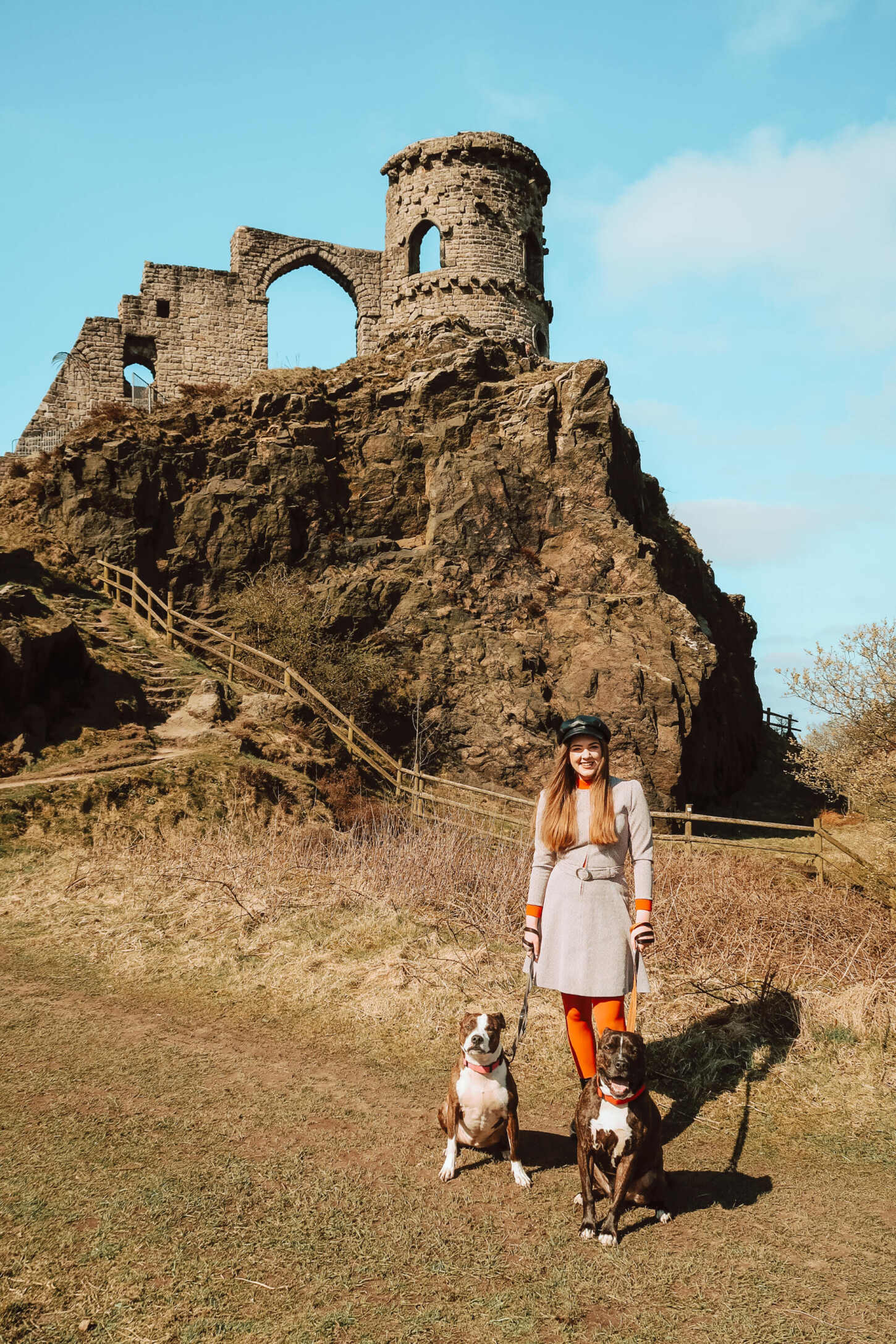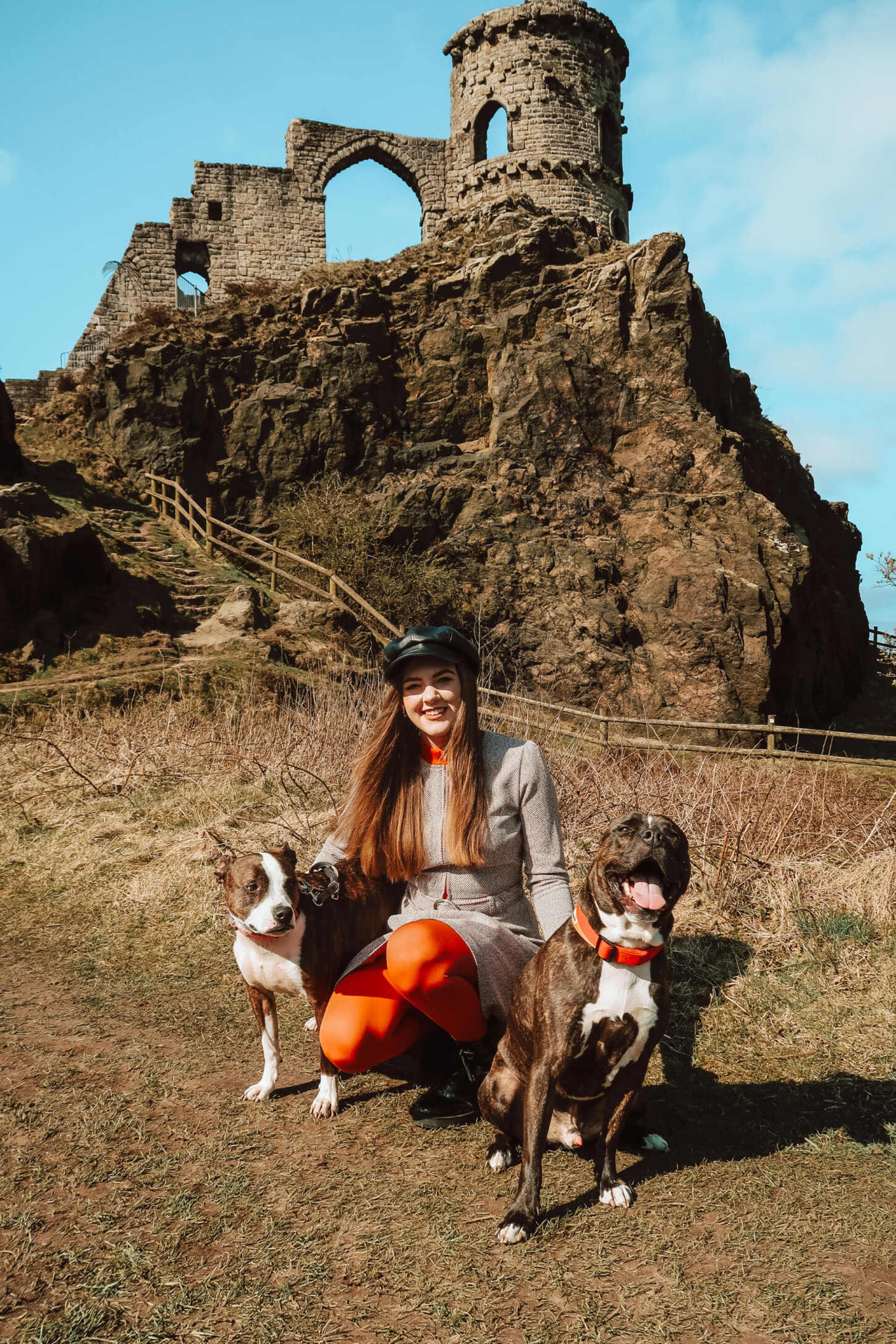 Mow Cop Folly – also known locally as Mow Cop Castle – has been the first thing I see when I open my curtains each morning for 23 years. I’m blessed with the best view in the house, and on a sunny day, Mow Cop looks absolutely stunning. It’s lovely to just sit on the edge of my bed and have a cuppa, looking out at the Staffordshire Moorlands and Cheshire plain.
Mow Cop Folly – also known locally as Mow Cop Castle – has been the first thing I see when I open my curtains each morning for 23 years. I’m blessed with the best view in the house, and on a sunny day, Mow Cop looks absolutely stunning. It’s lovely to just sit on the edge of my bed and have a cuppa, looking out at the Staffordshire Moorlands and Cheshire plain.
Mow Cop is around two and a half miles from us, and on Good Friday, we decided to walk to it for the first time! Of course, I’ve visited the historic site a handful of times – my first ever job as a potwash was at the pub just down the hill – but we’d never walked to it, and neither had The Scamps.
Now owned by the National Trust, Mow Cop Folley makes up part of the Alderley Edge and Cheshire Countryside, offering breathtaking 360 degree views across Staffordshire and Cheshire.

On our walk up to the castle via Tower Hill Road – which links Brown Lees to Mow Cop – Phoebe and Frank enjoyed saying hello the the horses, sheep, ducks and alpacas in the nearby fields. Unfortunately, Tower Hill Road lacks a footpath, so we did have to walk in single file, keeping the dogs on the inside of the path, as cars and tractors can travel at speed around some of the bends. When we arrived at the top, we took a left on to Congleton Road, and then a right onto Castle Road, just past the Mow Cop Inn.
It’s a relatively steep climb up to the folly, but it is clearly labelled with a National Trust sign from the road, so is easy to spot.

Mow Cop Folly was originally built as a summerhouse in 1754, by Randle Wilbraham, who was local Lord of the Manor at Rode Hall. Made of hard sandstone grit, it sits at 355m above sea level, with the highest point being the mock tower. The iconic building is a major local landmark of regional importance. It was deliberately designed to look ruined, to create a romantic view – and the family also entertained at the site.
Om a clear day, you’ll be able to see ships on the Manchester Ship Canal, as well as Jodrell Bank and Little Moreton Hall. The views are absolutely incredible, so there’s no wonder you’ll often find people pitched up for a picnic when the weather is nice. Though surprisingly, it was relatively quiet on Good Friday, with a handful of dog walkers and a couple of picnickers.
Mow Cop was also historically known as being the site of the first Primitive Methodist meeting in 1807, as well as a controversial quarrying site. It was signed over to the National Trust in 1937, and people and their dogs have been enjoying the unusual Grade II listed structure and the surrounding countryside ever since.


The National Trust welcome dogs at all of the Cheshire countryside sites, so long as they follow the canine code, and owners keep them under close control. This means having reliable recall and the dog in sight at all times, as well as keeping them on a lead around livestock, and not letting them approach other walkers. As Mow Cop Folly is a relatively small site, I would’t really recommend it as a place for off-leash walking, particularly with the dangers of severe, rough cliff edges.
And of course, like any responsible dog owners, the charity also ask you to scoop the poop, and dispose of it at home. There aren’t many waste bins at Mow Cop Folly, so be prepared to take your waste home with you. In November 2017, a Dog Fouling and Dog Control Public Spaces Protection Order took effect within Cheshire East, meaning that anyone who fails to remove dog faeces that their dog has left, or anyone who has not placed their dog on a lead in areas where they have been asked to by the landowner, will be subject to an ‘on the spot’ Fixed Penalty Notice up to the value of £100.
When we arrived at the top of the hill to admire the folly, we sat down for a rest and let the dogs have a drink. We packed a few bottles of water and our super handy collapsible Beco bowl for them to use.









